Early (1957) Ameco Code Practice Oscillator
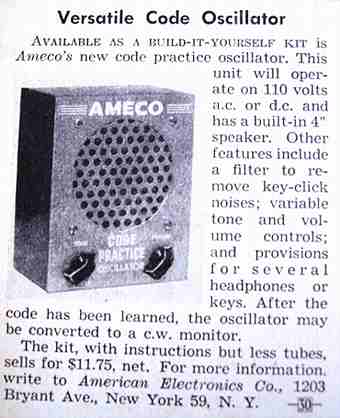

Ameco produced several code practice oscillators, including this older version mentioned in Popular Electronics in June 1957. This early model CPS was available either as a kit or completely built and tested. As noted in the catalog ad below, it was sold either with or without the tubes. The tubes are a 35W4 rectifier and a 50C5 oscillator/ audio out.
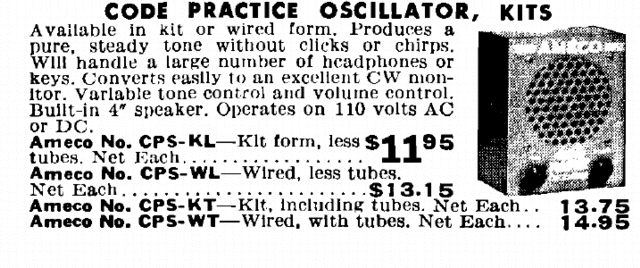
I originally only had this example which is in rough cosmetic condition, typical of a 50+ year old piece that has seen lots of use. Because of the silk-screening, I could not readily repaint it.
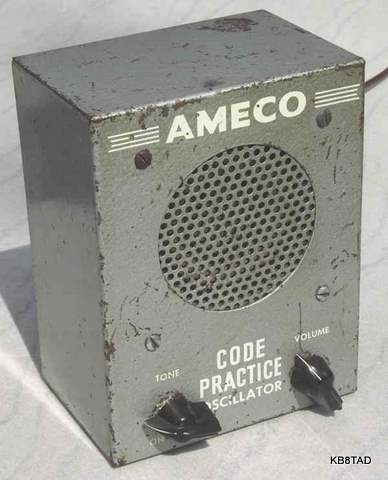
At a more recent hamfest, I found this one in excellent cosmetic condition.
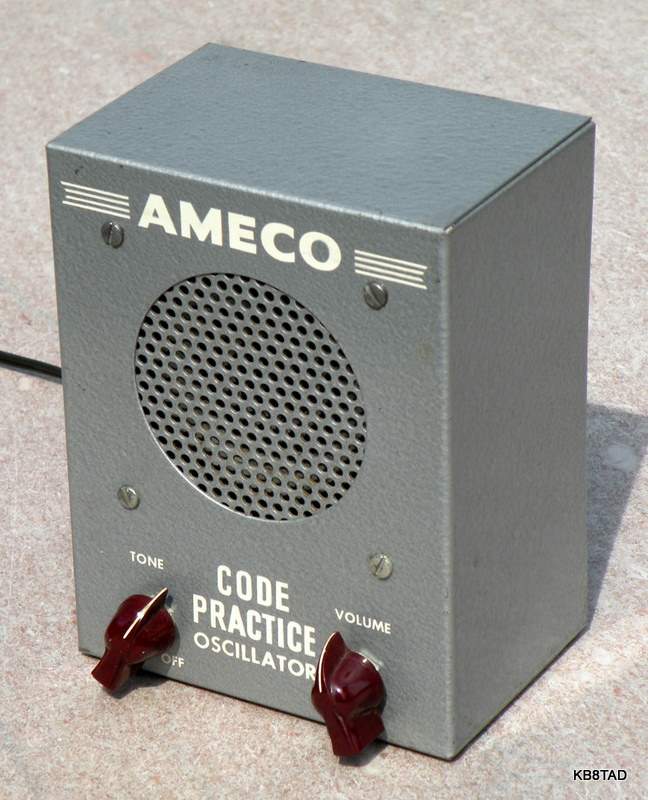
A hazardous circuit
These early Ameco CPS code practice oscillators have the same problem as the Bud Codemaster model CPO-128A, putting 140 volts of B+ on the key and the terminal strip to which the key is connected. Using them as originally wired will place 140 volts between the key and any grounded object such as any modern 3 wire appliance, computer, or radio.
The later Ameco CPS at this link is a much safer Ameco that keys the secondary side of the output transformer rather than the primary with its B+. If you decide to use this early CPS version, I recommend rewiring it to match the later Ameco or at the very least, taping over the key terminals on the back and adding a warning.
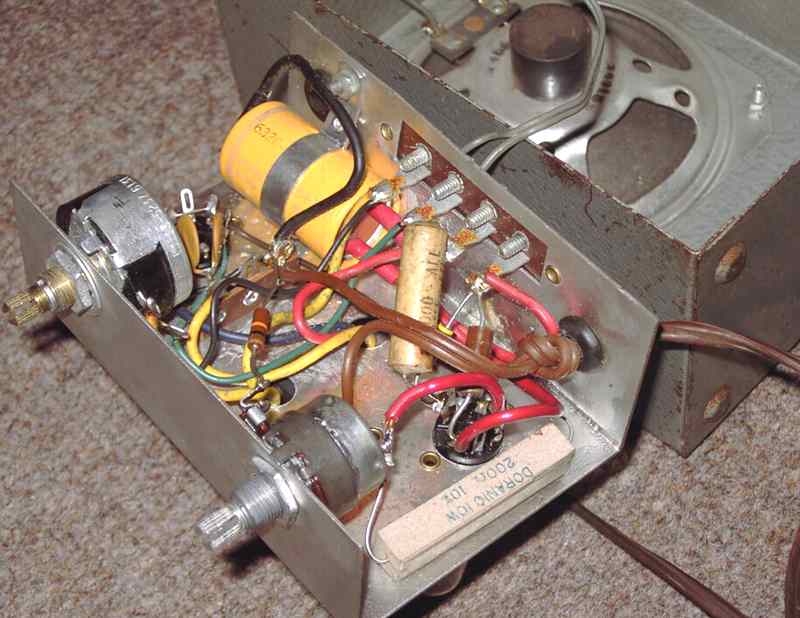
Repair Notes
The first CPS had an open power switch. The problem was solved by application of contact cleaner and working the switch. The tone control was also cleaned. The volume control which is a simple low ohms speaker fader control, was intermittent. I had to open that control to apply contact cleaner directly inside to solve the problem. After that treatment, the oscillator worked as expected.
The second CPS just needed contact cleaner applied to its controls.
Modifying it for safety
The original unsafe circuit may have allowed for easier conversion to a transmitter monitor. However, in the interest of safety, I advocate making modifications, especially if they are reversible.
I removed all the components and wires to the key side of the terminal strip, connecting those components together under the chassis but not to either key terminal. I then added a jumper wire between the speaker and the key terminals which allows the key terminals to continue to be used as intended but only to key the speaker side of the output transformer. Like the later and safer CPS, the key is simply in series with the speaker to send code.
As noted, the volume control on this early CPS model is actually a fader-style low-ohms potentiometer on the speaker side. That provides a proper load on the output transformer at all times. If the output transformer was not loaded on key-up, I would have added a 50 or 100 ohm resistor across the transformer secondary to provide a constant minimal load.
5-08; update 3-10